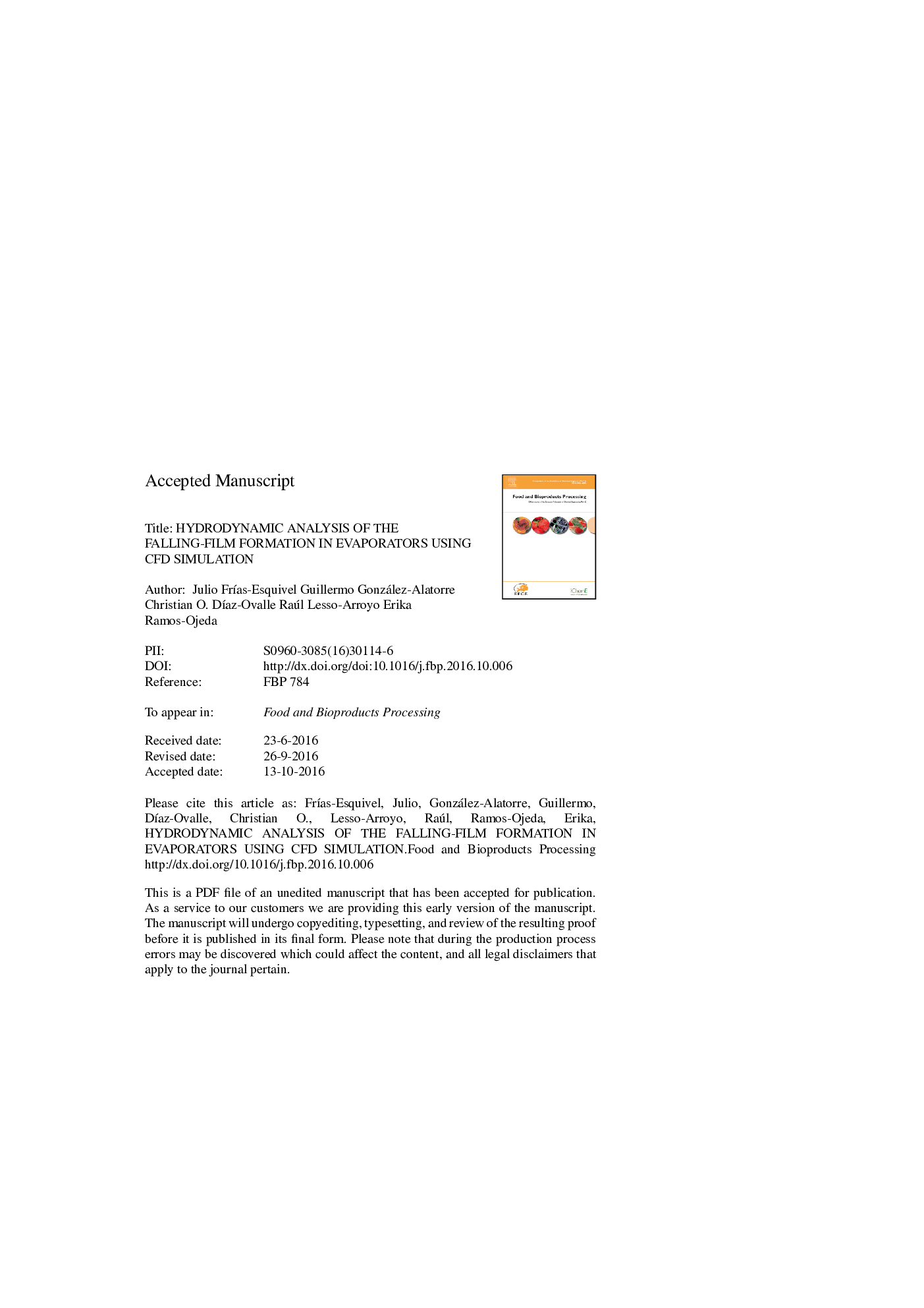| Article ID | Journal | Published Year | Pages | File Type |
|---|---|---|---|---|
| 4753041 | Food and Bioproducts Processing | 2017 | 48 Pages |
Abstract
Fouling in falling-film evaporators is a problem that reduces thermal efficiency and occurs due to the poor liquid distribution to the tubes and one of the consequences is the uncompleted wetting of the tube. This study proposes a design option based on the height of the feed hole and the geometry of the tube edge. The simulation was carried out with computational fluid dynamics using CFX Ansys 14.0 with multiphase and free surface models. The falling film was treated under a laminar regime as indicated by a regime flow. The results indicate that the proposed edges generate break-up in the film flow with rivulet formation, brink depth and counterflow from the air. The falling-films obtained showed flows in a transition regime, film thickness greater than that obtained experimentally and a falling-film wetting rate close to the experimental value. The simulations indicated that the greatest amount of wetted area on the wall is achieved with variable slope edges at a the low distributor plate height.
Related Topics
Physical Sciences and Engineering
Chemical Engineering
Bioengineering
Authors
Julio FrÃas-Esquivel, Guillermo González-Alatorre, Christian O. DÃaz-Ovalle, Raúl Lesso-Arroyo, Erika Ramos-Ojeda,
